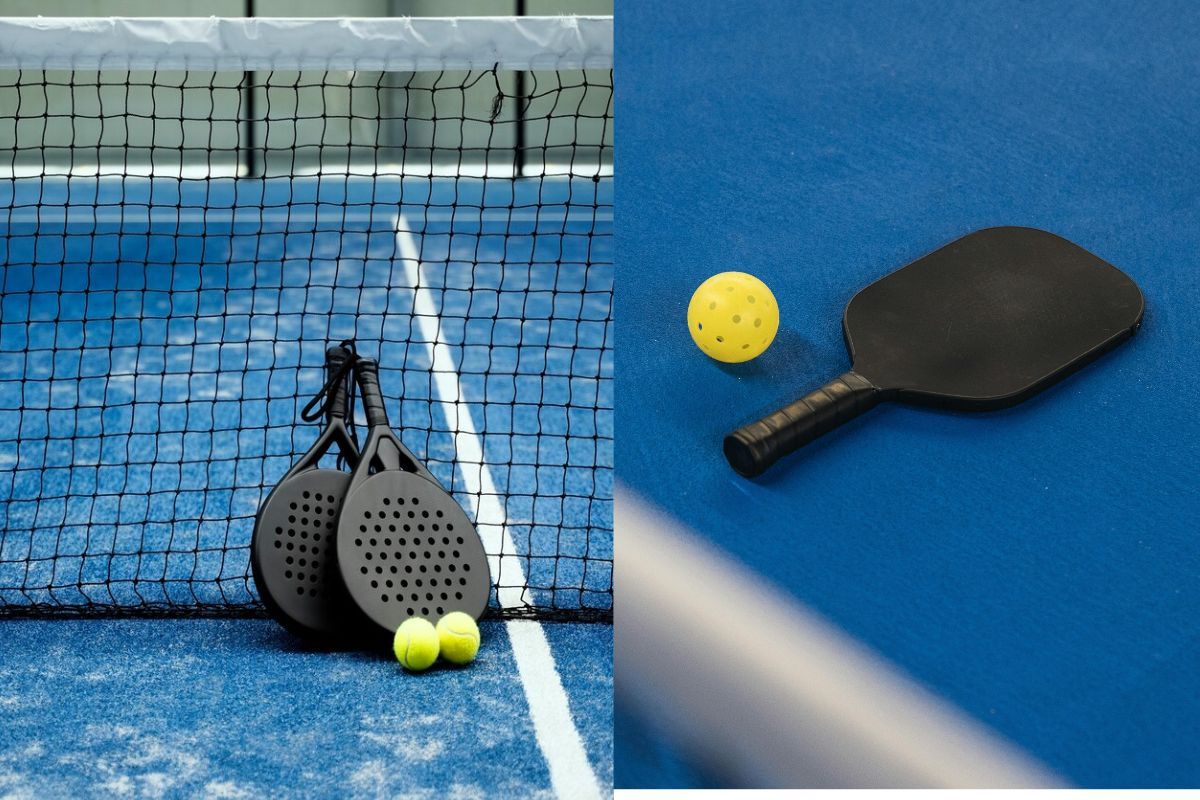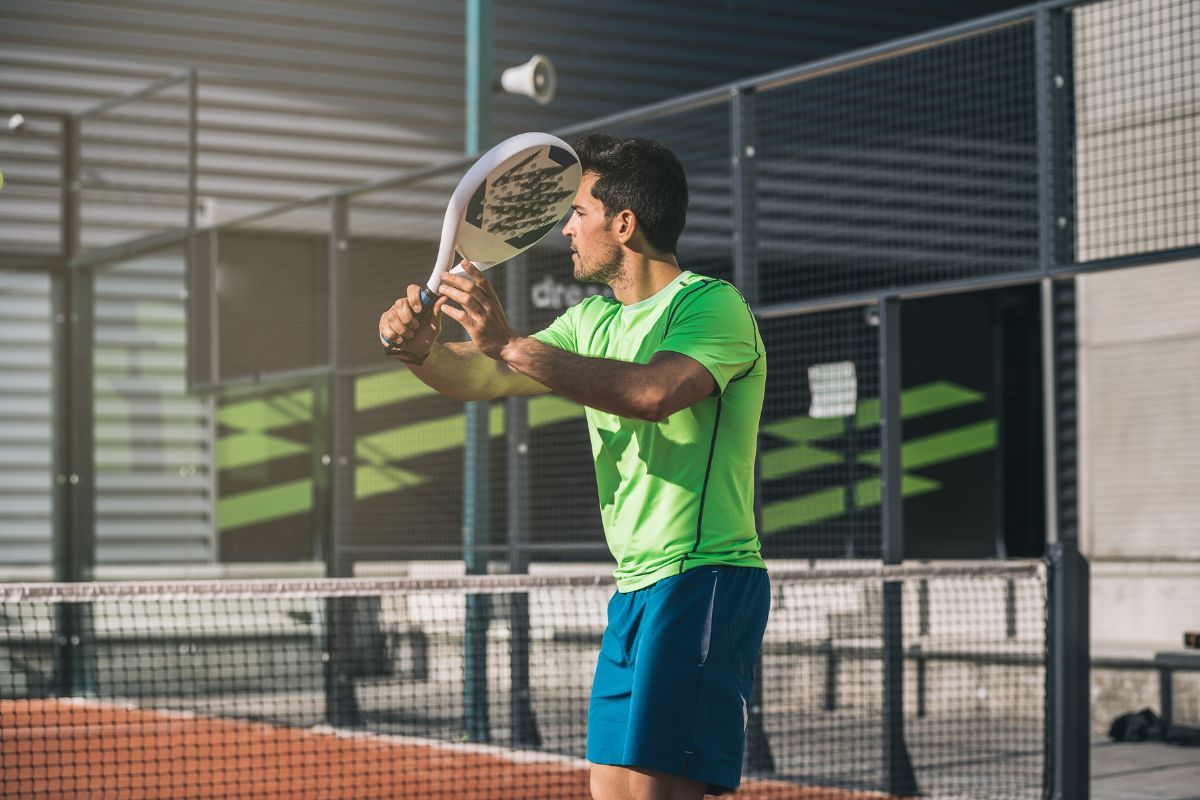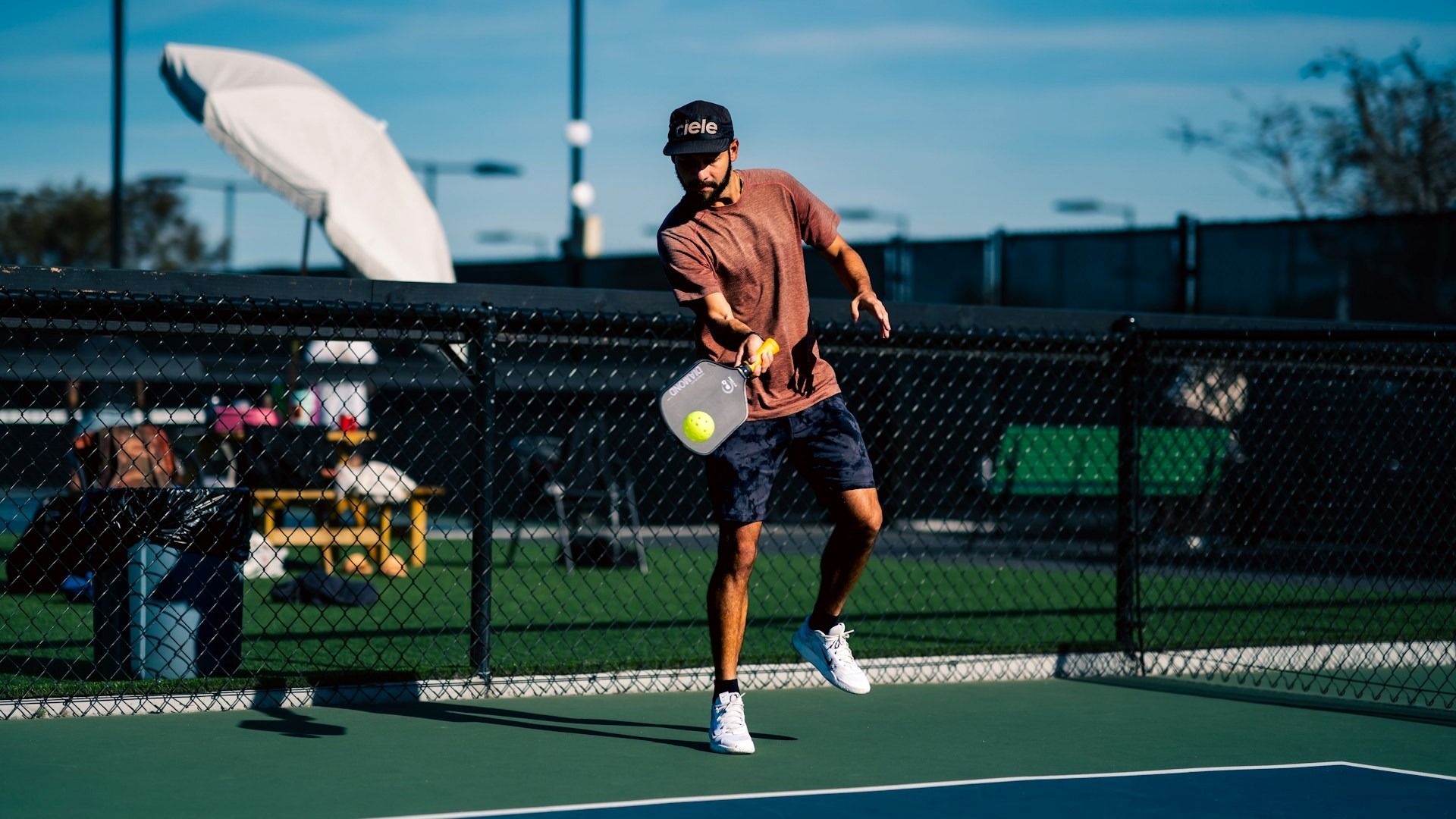Padel vs Pickleball: What's the difference?
In recent years, padel and pickleball have seen a surge in popularity, each drawing in fans for distinct reasons. Here’s a look at the differences between them.

Source: www.freepik.com and www.pexels.com/MasonTurtle
Are you in the mood for something a bit different from the usual tennis or badminton game? Let’s dive into the world of Padel and Pickleball—two racquet sports that are rapidly gaining popularity around the world.
While they might seem similar at a glance, each brings its own unique twist to the court, offering tons of fun and competitive play. Whether you’re looking to spice up your fitness routine or simply curious about these exciting sports, stick around as we explore what sets Padel and Pickleball apart, their intriguing similarities, and why you might prefer one over the other. Ready to learn more about these trendy sports? Let's jump right in!
What is Pickleball?

Source: www.pexels.com/DavidGari
Pickleball is a vibrant sport that mixes elements of tennis, badminton, and table tennis into one exciting game. It was invented in the mid-1960s on Bainbridge Island, near Seattle, when a few friends were looking for a fun activity to keep their families entertained. They improvised with what they had—ping-pong paddles and a wiffle ball—and played on a badminton-sized court. This simplicity and the unique blend of sports elements quickly made Pickleball a hit.
The game is played on a court that's similar in dimensions to a badminton court, measuring 20 feet wide by 44 feet long. In the center, a net divides the court, hanging a bit lower than in tennis, at 36 inches on the ends and 34 inches in the middle. Players use paddles, which are larger than ping-pong paddles but smaller than tennis rackets, to hit a perforated plastic ball, similar to a wiffle ball, over the net.
Pickleball can be played as singles or doubles, making it a versatile sport for different group sizes. The rules are straightforward and prioritize quick reflexes and strategic thinking over physical strength, which makes it accessible and enjoyable for people of all ages and skill levels.
What is Padel?

Source: www.freepik.com/HelloDavidPradoPerucha
Padel is a dynamic sport that combines elements of tennis and squash, creating a fast-paced and thrilling game. Originating in Mexico in the late 1960s, Padel was invented by Enrique Corcuera, who wanted to create a game that could be played in a smaller, more enclosed space. It quickly gained popularity in Spain and Latin America before spreading to other parts of the world, where it continues to grow rapidly.
The game is played on a court that's smaller than a tennis court, measuring 33 feet wide by 66 feet long. What makes Padel unique is the enclosed nature of the court, with walls that players can use to bounce the ball off, similar to squash. The net is slightly lower than in tennis, and players use solid, stringless paddles to hit a low-compression ball over the net.
Padel is typically played in doubles, making it a social and interactive sport. The gameplay is fast and requires a mix of quick reflexes, strategic thinking, and teamwork. Because of the smaller court size and the ability to use the walls, Padel offers a unique challenge that’s different from other racquet sports. It’s easy to learn, making it accessible to beginners, yet it offers enough complexity to keep experienced players engaged.
Is padel the same as pickleball?
While Padel and Pickleball may look similar at a glance due to their court-based, racquet-paddle nature, they are distinct sports with unique rules and playing environments. The primary difference lies in the equipment and court setup, which lead to different styles of play and strategies.
Court and equipment: Padel is played on an enclosed court roughly 25% smaller than a tennis court, with walls that players can use strategically to play the ball. The paddles used in Padel are solid and stringless, closer to a platform tennis paddle but without any strings. In contrast, Pickleball uses a perforated plastic ball, similar to a wiffle ball, and is played on a smaller court akin to a badminton court, without any walls.
Gameplay: In Padel, the ball can be played off the walls in a manner similar to squash, adding an extra dimension to the strategy. Pickleball, on the other hand, emphasizes serving and volleying within a well-defined no-volley zone near the net, known as the "kitchen." This zone restricts players from executing smashes too close to the net, which balances defensive and offensive play dynamics.
Scoring and rules: Both sports have their specific rules and scoring systems, with Pickleball featuring a unique double-bounce rule, where the ball must bounce once on each side before volleys are allowed. Padel does not have this restriction but incorporates rules from tennis and squash regarding serves and wall plays.
Similarities between pickleball and padel
Pickleball and Padel share several similarities that make them both appealing, especially to players transitioning from other racquet sports or those seeking social and physically engaging activities.
Social aspect: Both sports are predominantly played in doubles, which fosters a highly social environment. This setup encourages teamwork and communication, making both Padel and Pickleball popular choices for social gatherings, club activities, and family games.
Accessibility: Padel and Pickleball are accessible to a wide range of ages and skill levels. Thanks to their relatively simple rules and the smaller court sizes compared to tennis, beginners can quickly feel comfortable and competitive. Both sports are known for being easy to learn but challenging to master, offering a satisfying progression for new players.
Physical benefits: Each game provides excellent cardiovascular exercise, improving agility, reflexes, and muscle tone with a lower risk of injury than some other racquet sports. The activities involve constant movement, dynamic shifts in direction, and the use of various muscle groups, which are great for overall fitness.
Tactical play: Strategy plays a crucial role in both sports. Players must think quickly and tactically, making decisions on positioning, shot selection, and the use of space. The presence of a net and defined court boundaries in both games emphasizes skillful placement of shots and strategic game planning.
Equipment: While the specific equipment differs, the general setup—a paddle or racket and a modified ball—remains consistent. This similarity in gear makes it easier for players to appreciate the nuances of each sport without adjusting to entirely different tools.
Differences between pickleball and padel
While Pickleball and Padel share some similarities, they also have several key differences that define each sport's unique character and appeal.
Court design: Padel courts are enclosed with walls and mesh, similar to a squash court, allowing balls to be played off these surfaces. This feature adds an extra layer of strategy to the game. Pickleball courts, on the other hand, resemble a scaled-down tennis court with no walls. This difference fundamentally changes the gameplay, as Padel players can use the walls to their advantage, which is not an option in Pickleball.
Equipment: The paddles and balls used in each sport are distinctly different. Padel paddles are solid without strings and have perforations, while Pickleball paddles are larger and resemble oversized ping-pong paddles. The Pickleball itself is a perforated plastic ball, designed to move with precision but at slower speeds, whereas Padel uses a rubber ball similar to a low-compression tennis ball, which has a faster and more erratic bounce.
Scoring and rules: Padel scoring is identical to tennis, with games, sets, and matches, while Pickleball uses a simpler scoring system where games typically go up to 11, 15, or 21, and only the serving side can score points. Additionally, Pickleball features a no-volley zone (the "kitchen"), which prohibits players from volleying the ball within seven feet of the net, a rule that does not exist in Padel.
Playing style: Padel generally involves more strategic, controlled play with a focus on positioning and angle shots due to the walls. Pickleball is characterized by fast volleys, dinks, and groundstrokes with an emphasis on placement and depth to outmaneuver opponents.
Player configuration: While both sports are popular in doubles play, Pickleball is also widely played as singles, which changes the dynamics and strategies significantly. Padel, by contrast, is predominantly a doubles sport due to the court size and game mechanics.
Who would enjoy pickleball?
Pickleball is a versatile sport that caters to a wide array of enthusiasts, from casual players to competitive spirits. Its appeal lies in its accessibility and the social interaction it fosters, making it a favorite among various groups.
Seniors: Pickleball is particularly popular among older adults. Its smaller court size and slower-paced ball make it easier on the joints and less physically demanding than tennis. The social aspect of doubles play also provides a fantastic way for seniors to stay active and connected with others.
Families: Families find Pickleball an excellent choice for spending quality time together. The simple rules and manageable court size make it easy for even young children to join in. It’s a fun way for family members of all ages to engage in healthy competition and teamwork.
Beginners to racquet sports: Those new to racquet sports often gravitate towards Pickleball as an entry point. The learning curve is not steep, allowing newcomers to quickly feel competent and competitive. This accessibility encourages continued participation and skill development.
Social players: Individuals looking for a social activity that combines fitness with fun will enjoy Pickleball. The sport is known for its welcoming community and the ease of setting up games in local parks, community centers, and sports clubs.
Competitive athletes: For more competitive players, Pickleball offers structured leagues and tournaments that cater to higher skill levels. The strategic depth and quick pace of advanced play provide a challenging and rewarding experience for competitive athletes.
Who would enjoy padel?
Padel is a dynamic and engaging sport that attracts a diverse crowd, thanks to its unique blend of accessibility and tactical depth. Here’s who might find themselves drawn to the Padel courts:
Tennis and squash players: Those familiar with racquet sports, especially tennis and squash, often find Padel an exciting alternative. The skills from these sports translate well to Padel, with an added twist thanks to the use of walls. This makes Padel appealing for those looking to diversify their racquet sport experience without starting from scratch.
Team players: Since Padel is predominantly played in doubles, it’s ideal for those who thrive in team environments. The need for coordination and strategic communication makes it a great choice for players who enjoy sports that require partnership and teamwork.
Fitness enthusiasts: Individuals looking for a full-body workout that's also fun tend to enjoy Padel. The sport is fast-paced and requires a good amount of movement, agility, and reflexes, providing an excellent cardiovascular workout along with muscle engagement across the body.
Social seekers: The social aspect of Padel is a big draw. The enclosed court and doubles format foster a close-knit and interactive atmosphere, making it easy to make friends and enjoy a lively social scene. Clubs often organize socials and mixers around Padel sessions, enhancing its appeal as a community-building sport.
Strategic minds: Players who enjoy a tactical challenge will find Padel deeply satisfying. The ability to use the walls in play introduces a unique strategic component, not just in terms of shot placement but also in predicting and countering opponents’ moves.
All age groups: Like Pickleball, Padel is accessible to a wide age range, from young children to seniors. The enclosed court reduces the amount of running required, making it less physically demanding while still being challenging and engaging.
Padel serves as a bridge between physical exercise and social interaction, making it an excellent choice for anyone looking to enhance their fitness through a fun, strategic, and community-oriented sport. Whether you’re a seasoned athlete or a weekend warrior, Padel offers a welcoming and exhilarating environment.
Padel vs pickleball: which is better?
Deciding whether Padel or Pickleball is the better sport ultimately depends on your personal preferences and what you’re looking for in a racquet sport. Each has its unique charms and challenges, catering to different tastes and physical abilities.
Padel is great for those who enjoy teamwork, as it's always played in doubles. The enclosed court and wall play add a distinctive strategic layer, appealing to players who like a tactical challenge. It’s also a fantastic choice for tennis and squash players looking for a similar yet distinctively different experience. Padel's social environment and the slightly less physically demanding nature make it suitable for a wide age range, from young to senior players.
Pickleball, on the other hand, is renowned for its accessibility and inclusive nature. It's easier on the body due to the smaller court and lighter ball, which makes it especially popular among seniors and beginners. The game's simplicity and the vibrant community around it make Pickleball a social and friendly sport for players of all skill levels. It's also versatile, allowing for both singles and doubles play, which can be appealing if you prefer playing alone or with a partner.
Choosing between the two:
- If you’re looking for a sport that emphasizes strategy with a physical component and enjoy the dynamic of playing with a partner, Padel might be your pick.
- If you prefer a sport that you can quickly pick up, that offers both singles and doubles play, and has a strong community feel, Pickleball could be the better choice.
Both sports provide excellent physical workouts, lots of fun, and a chance to meet new people. They each fill a niche in the sports world, making them both fantastic choices depending on what you value most in your recreational activities. Why not try both and see which one resonates more with your style of play?
Good luck!
Friska 🐨
Read next: The best Pickleball paddles for beginners
Do you want to see more content like this? Follow us on Instagram and Facebook for more wellness advice, fitness trends, workout inspiration, and even best health and fitness deals exclusive to our followers. Don’t miss out!

